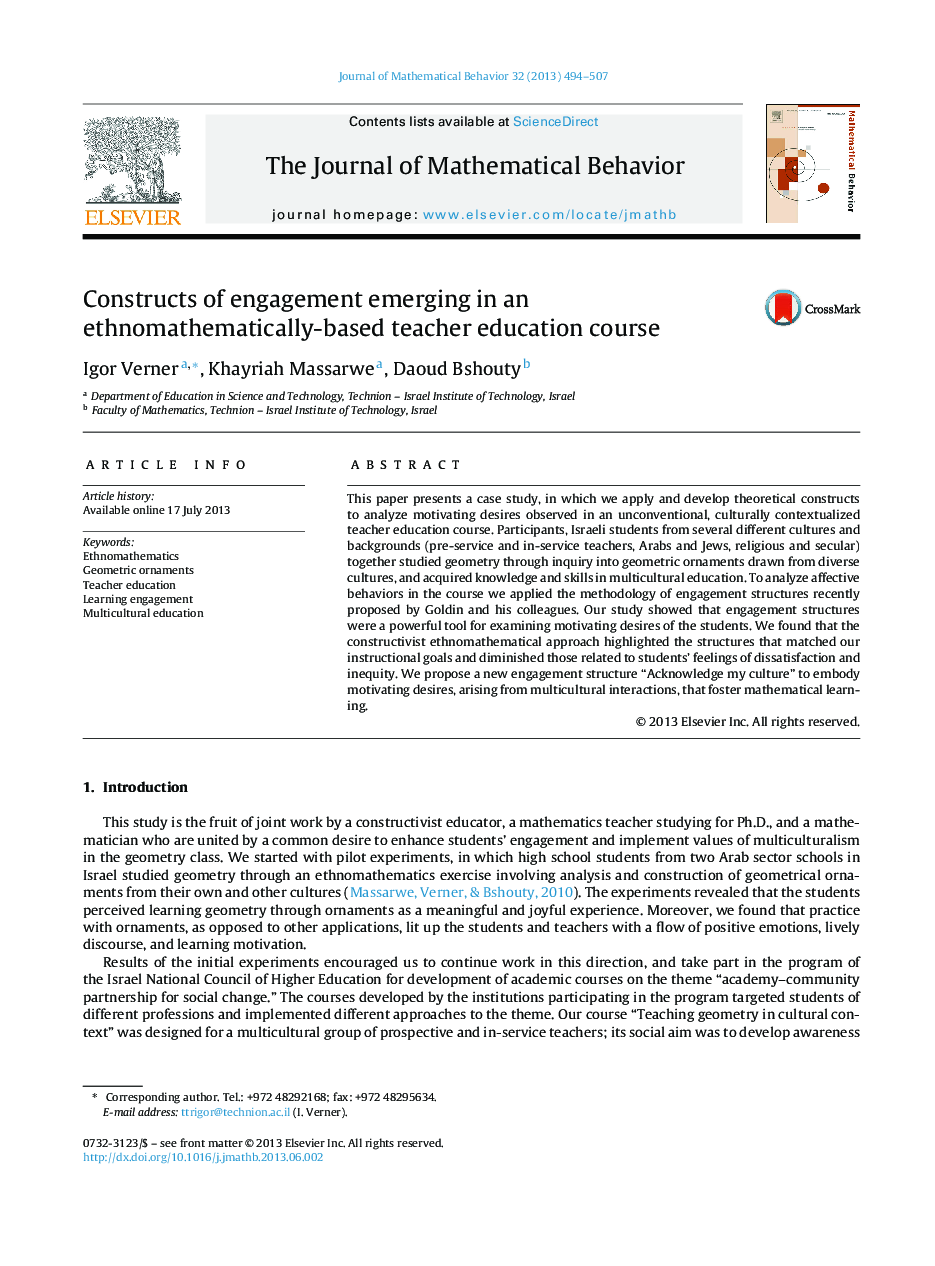| کد مقاله | کد نشریه | سال انتشار | مقاله انگلیسی | نسخه تمام متن |
|---|---|---|---|---|
| 360812 | 1436020 | 2013 | 14 صفحه PDF | دانلود رایگان |

• Engagement structures are a powerful tool for studying students’ motivating desires.
• Ethnomathematical activities can significantly enhance learning engagement.
• Analysis and construction of ornaments foster students’ interest to learn geometry.
• Cultural inquiry helps to recognize diversity as a drive for learning mathematics.
• We propose a new engagement structure “Acknowledge my culture”.
This paper presents a case study, in which we apply and develop theoretical constructs to analyze motivating desires observed in an unconventional, culturally contextualized teacher education course. Participants, Israeli students from several different cultures and backgrounds (pre-service and in-service teachers, Arabs and Jews, religious and secular) together studied geometry through inquiry into geometric ornaments drawn from diverse cultures, and acquired knowledge and skills in multicultural education. To analyze affective behaviors in the course we applied the methodology of engagement structures recently proposed by Goldin and his colleagues. Our study showed that engagement structures were a powerful tool for examining motivating desires of the students. We found that the constructivist ethnomathematical approach highlighted the structures that matched our instructional goals and diminished those related to students’ feelings of dissatisfaction and inequity. We propose a new engagement structure “Acknowledge my culture” to embody motivating desires, arising from multicultural interactions, that foster mathematical learning.
Journal: The Journal of Mathematical Behavior - Volume 32, Issue 3, September 2013, Pages 494–507